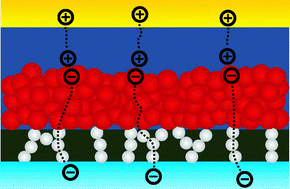Comparative study of conventional and hybrid blocking layers for solid-state dye-sensitized solar cells
Abstract
In hybrid solar cells a blocking layer between the transparent electrode and the mesoporous titanium dioxide is used to prevent short-circuits between the hole-conductor and the front electrode. The conventional approach is to use a compact film of titanium dioxide. This layer has to be of optimum thickness: it has to cover the rough surface of the anode material completely while keeping it as thin as possible since the layer acts as an ohmic resistance itself. A competitive alternative arises when using an amphiphilic


 Please wait while we load your content...
Please wait while we load your content...